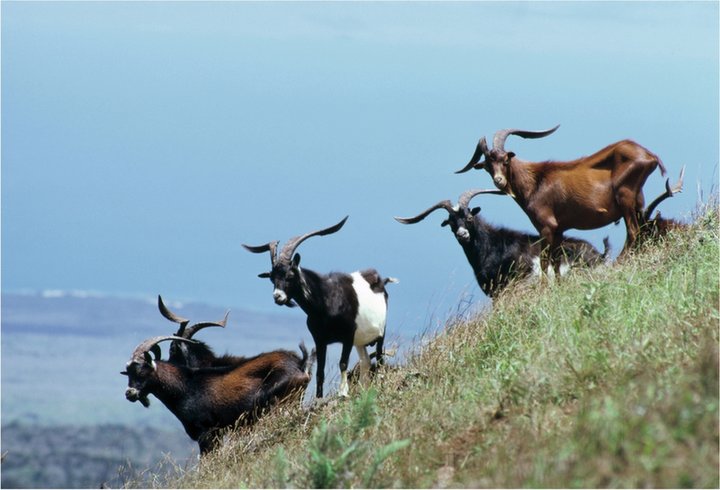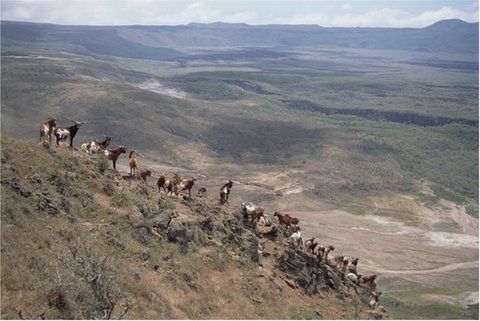
Thisgrasslandwasoncecoveredbythick forest.
BetweenManandGoat
Invasivespeciesincludeanimals,too.Thereare13introducedspeciesofmammalsintheGalápagos.✻Theonethathascausedthemostdamageisthegoat.Whalers,pirates,andfishersintroducedgoatstotheislandsinthe1850s.Withnoislandpredatorsandtheabilitytobreedtwicea year,thegoatpopulationgrewquickly.Bythelate1990s,thenumberofgoatsreachedsix figures.
Goatsareknownfortheirappetites.Overtime,theyatetheirwaythroughlargepatchesofland.What’sworse,theyatethesamethingsthetortoisesate,includingthepricklypear cactus.
✻BatsandriceratsaretheonlymammalsnativetotheGalápagos Islands.
TakingBacktheIslands
Onceaninvasivespeciestakesover,howdoyougetridofit?Galápagosfarmersfighttheblackberryoneplantatatime.Theyripthemoutby hand.
Tacklingthegoatproblemwasanothermatter.Thegoatswerecausingerosionandthreateningthesurvivalofrareplantsandtrees.Thegoatshadtogo.ProjectIsabelawasenactedin2004.Tensofthousandsofgoatswerekilledtoprotecttheislands.Plantandanimallifebegantorebound.Theplanwasusedonotherislands,too.TheGalápagosisnowlargely goat‑free.

aherdofgoatsonIsabela Island
Invasivespeciesposearealthreattotheislands.Eachmustbemonitoredandmanagedtoprotectthe islands.
Goatseatplantslikepricklypearcactus,whichisfoodforgianttortoises,landiguanas,doves,cactusfinches,and mockingbirds.